Over centuries
Introduction
How has the English spoken in London changed over the centuries? What forces shaped those changes, and what impact did they have?
Inscribed in ‘London English’ are the social, cultural, economic and demographic changes that the city has undergone through time. Studying the words, grammar and accents of the city can reveal layers of history, telling the story of its citizens, and of London itself.
Pre-12th Century
Friends, Romans, Londoners
Founded by the Romans in the early 1st century AD, London was an ethnically diverse town with migrants from across the Roman Empire. In the following centuries, speakers of Germanic dialects increasingly settled in the region.
During this period of Old English, London was not yet the centre of English political power that it is today. Different Anglo-Saxon kingdoms located around England were dominant during the early life of English – Northumbria, Mercia, and eventually King Alfred’s Wessex.
London increased in importance towards the end of the Old English period: William the Conqueror recognised the emerging importance of the city, and was the first to be crowned in Westminster Abbey.
12th Century
An England without English
Though the Old English dialect of West Saxon was becoming influential before the Danish and Norman invasions, there was no ‘standard’ English as there is today – the modern ideology of having a standard or ‘correct’ variety of the language did not yet exist.
The Norman conquest of 1066 delayed that further: French instantly became the primary language, and English disappeared from the written record for 150 years. The masses continued to speak English — now Middle English – but it was only after King John lost Normandy in 1204, and the Anglo-Normans lost their ties to France, that English rose again as a national language.
13th Century
Pardon my French
When French receded and English became ‘visible’ again – in manuscripts from London and elsewhere – it looked like a changed language. French had held a position of prestige and power for two centuries. As a result, English had not been controlled by authorities like the church, the court, or government, for some time.
This meant English had developed freely in natural, common usage without attempts to standardise it. The combination of everyday use and contact with Old Norse and then French created the simpler syntax of Middle English – a language that feels more familiar and is much easier to understand for Modern English speakers than Old English.
14th Century
Pilgrims, rogues and knights
By the time of Chaucer, London had long been the political and cultural centre of England. But Middle English remained highly variable and there was no dominant presence of a ‘standard’ English as there is today. Chaucer himself used the London sub-variety of the East Midlands (then Mercia) dialect, a variety that was influential in the modern language that developed in London.
But literature and English culture flourished in this post-French period, which was an important time of re-establishing English identity, and the English language was rapidly re-organising itself to fit emerging medieval social structures and subcultures.
15th Century
The beginnings of a standard English
By the end of the medieval period, a few varieties that would serve as the basis of a ‘standard’ English were emerging, mostly in London. These included the wider literary language of London but also the Chancery Standard, which was used for government documents.
It was also around this time, possibly from the influence of French among the new middle classes, that the pronunciation of English vowels started to change. The ‘Great Vowel Shift’ continued for 300 years, and gave us many of today’s Standard English pronunciations.
We know some elements of the London accent were taking shape at this time, from Chaucer and other writers (e.g. rhyming patterns). But it is not until a few centuries later that we see the fully articulated system of social class shaping London English into what it is today.
16th Century
A changing city and a changing language
From the 16th century, London moved out of the feudal age into one with a growing middle class and increased contact with the outside world. Language became an indicator of increasingly defined lower, middle and upper social classes.
A debate raged about how much English should borrow from languages like French, Latin, and Greek. Some wanted to preserve a ‘pure’ Anglo-Saxon English (an idealised notion: remember, London had always been a melting pot of dialects); others wanted more integration with Romance languages to borrow their prestige. Meanwhile, Shakespeare took advantage of the chaos to coin thousands of new English words and phrases.
The more purist stance on English style remained influential for many London writers centuries later: Dickens and Orwell both expressed preference for a spare, Anglo-Saxon style. All the same, thousands of French words successfully entered the English language during this time.
17th Century
Revolution, fire and plague: a century of upheaval
The 17th century witnessed incredible upheaval: the English Civil War, the plague, the Great Fire of London and new waves of migration.
The Civil War saw England veer from Puritan rule to the liberties and excesses of the Restoration in a very short time. Refugee French Huguenots settled in the East End, and the expulsion of Jews from England ended when they were invited to resettle by Oliver Cromwell. These large scale migrations changed demographics, with new East End communities developing, while economic turmoil and new social mobility disrupted old feudal structures.
The social class structure of the city was transformed, generating anxiety about prestige which led to an increased emphasis on gaining status through ‘correct’ speech. These upheavals, and their impacts on language, formed the foundations of the polarised system of a high prestige standard English and working class vernacular English that developed in later centuries in London.
18th Century
An emphasis on status and standards
The eighteenth century saw an anxious reaction to the previous century with a swing to a more conservative, Augustan age.
It was an age of publication of dictionaries and grammar – such as Samuel Johnson’s famous ‘Dictionary of the English Language’, Jonathan Swift’s ‘A Proposal for Correcting, Improving and Ascertaining the English Tongue’ – and an increased attempt to control and ‘fix’ the English language.
These efforts to standardise English accompanied efforts in London institutions to nurture a high-prestige language suited to the growing international prestige and power of Britain’s expanding empire.
19th Century
Establishing identities: the alignment of speech and class
The nineteenth century saw many new communities form in London, including Irish migrants fleeing famine in Ireland, and the arrival of Yiddish-speaking Jewish refugees from Eastern Europe, all of whom contributed to London English.
The standard-vernacular divide in British culture was fully established by now, as varieties of London speech became completely aligned with places in the hierarchy of social class.
Victorian literature – Dickens, the Brontës, George Eliot, many others – gives us an exceptionally vivid picture of a finely controlled social class system through, among other details, the detailed depiction of working, middle, and upper class London speech.
20th Century
From fixed to fluid: a new generation of change
The first half of the 20th century was a stable period in London’s history, socially and linguistically.
Foreign migration was low, though important communities of non-English speakers existed. The dominant accents reflected a rigid class hierarchy – Received Pronunciation (named in 1920, and originally described as Public School English) was the prestigious standard, associated with the upper class and an aspirational middle class. The traditional vernacular – Cockney – was associated with lower classes and highly stigmatised.
Following World War Two social mobility and migration led to major demographic change. A flurry of new language varieties formed as arrivals from the Caribbean and South Asia fused their dialects with London vernaculars to create new varieties, like London Jamaican, British Asian English and Black British English.
21st Century
New dynamics and new varieties
At the start of the 21st Century, London continued to see large-scale migration, both from existing sources as well as increasing numbers from West Africa and Eastern Europe, and these ongoing changes have continued to impact the accents and dialects of the city.
New hybrid varieties have emerged, for example Multicultural London English (MLE) which developed among groups from different ethnic and linguistic backgrounds living together in high-migration neighbourhoods. These new varieties are replacing the traditional vernacular Cockney in working class parts of London now, especially among the young.
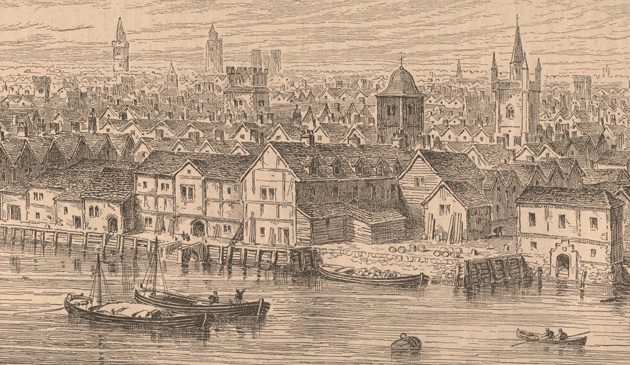
A city of migration
Migration has been a feature of life in London for centuries. As well as bringing speech from other parts of the British Isles – leading to contact between speakers of different dialects of English – it has also brought English into contact with many foreign languages.
Over time these raw materials became part of new accents and dialects formed over many different cycles, with each new variety slotting into a different place in the evolving hierarchy of British social classes.

A prejudice as old as London
Judging someone by how they speak, and mocking or stigmatising certain accents, as well as their association with social position, is nearly as old as the city itself. In Chaucer’s Canterbury Tales, written in the late 1300s, the character of the Prioress is mocked for speaking French with a distinctly East London accent, as she attempted to appear more sophisticated by speaking the language of the aristocracy:
“Frenssh she spak ful faire and fetisly, After the scole of Stratford atte Bowe, For Frenssh of Parys was to hire unknowe.”
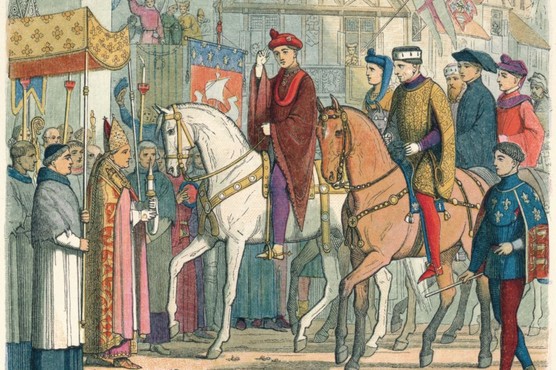
Chancery Standard
‘Chancery Standard’ describes the written English of London’s Chancery clerks in the 15th century. The clerks worked for the king, preparing his documents, and the standard developed around 1430. Before the 1430s, official records were usually written in Latin or French.
It was based on the speech of London, which at the time was heavily influenced by the East Midlands. Clerks who used the standard were often familiar with Latin and French, which also influenced the forms they chose.
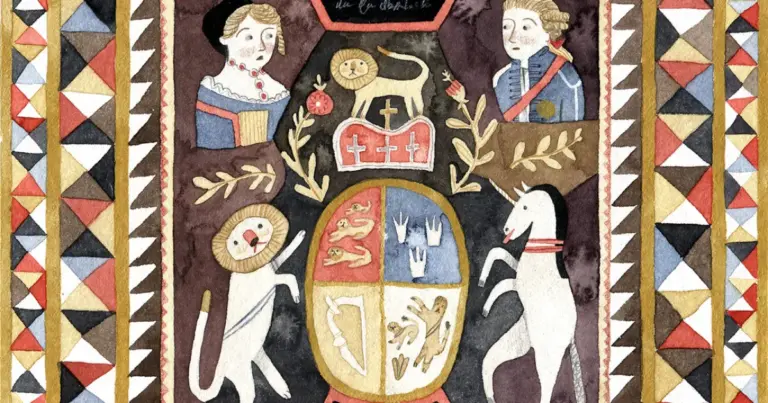
Elizabethan Cant
This was a variety of working class speech that emerged in the 16th century, and was an early example of the ‘antilanguages’ that have always developed in London. These are common in working class subcultures, and use slang words to obscure meaning and avoid surveillance.
Cockney and Multicultural London English (MLE) also have examples of these sorts of antilanguage. Like these modern varieties, Elizabethan Cant had very diverse influences, including French and Romani. A few words, such as ‘booze’, remain in use to this day.
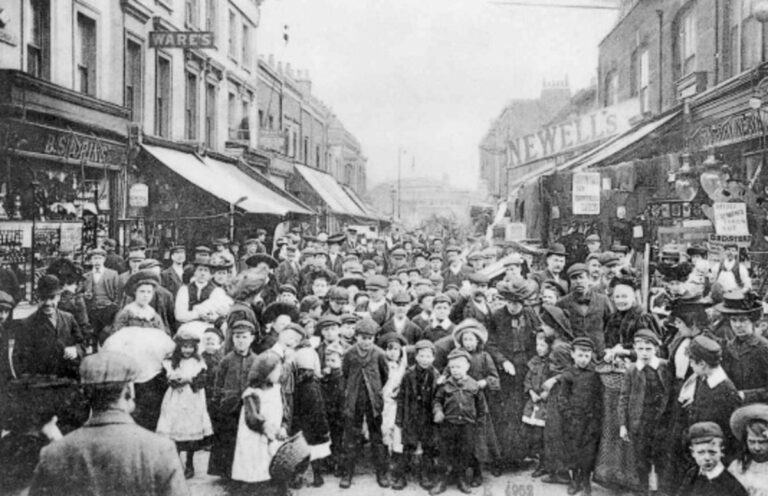
Cockney
The East End has been home to almost all of London’s most famous vernaculars — Elizabethan cant, Cockney, and MLE. By the 19th century the accent and dialect of Cockney were internationally known, featuring in the work of Charles Dickens and George Bernard Shaw.
Cockney is often seen as a quintessentially English dialect. However its origins were as influenced by immigration as any modern London varieties, with words from the Yiddish (oi, nosh, schtum, kosher, schlepp), from Hindi/Urdu via military officers in British India (decko, doolally, Blighty), and from Anglo-Romani (pal, chav, wonga).
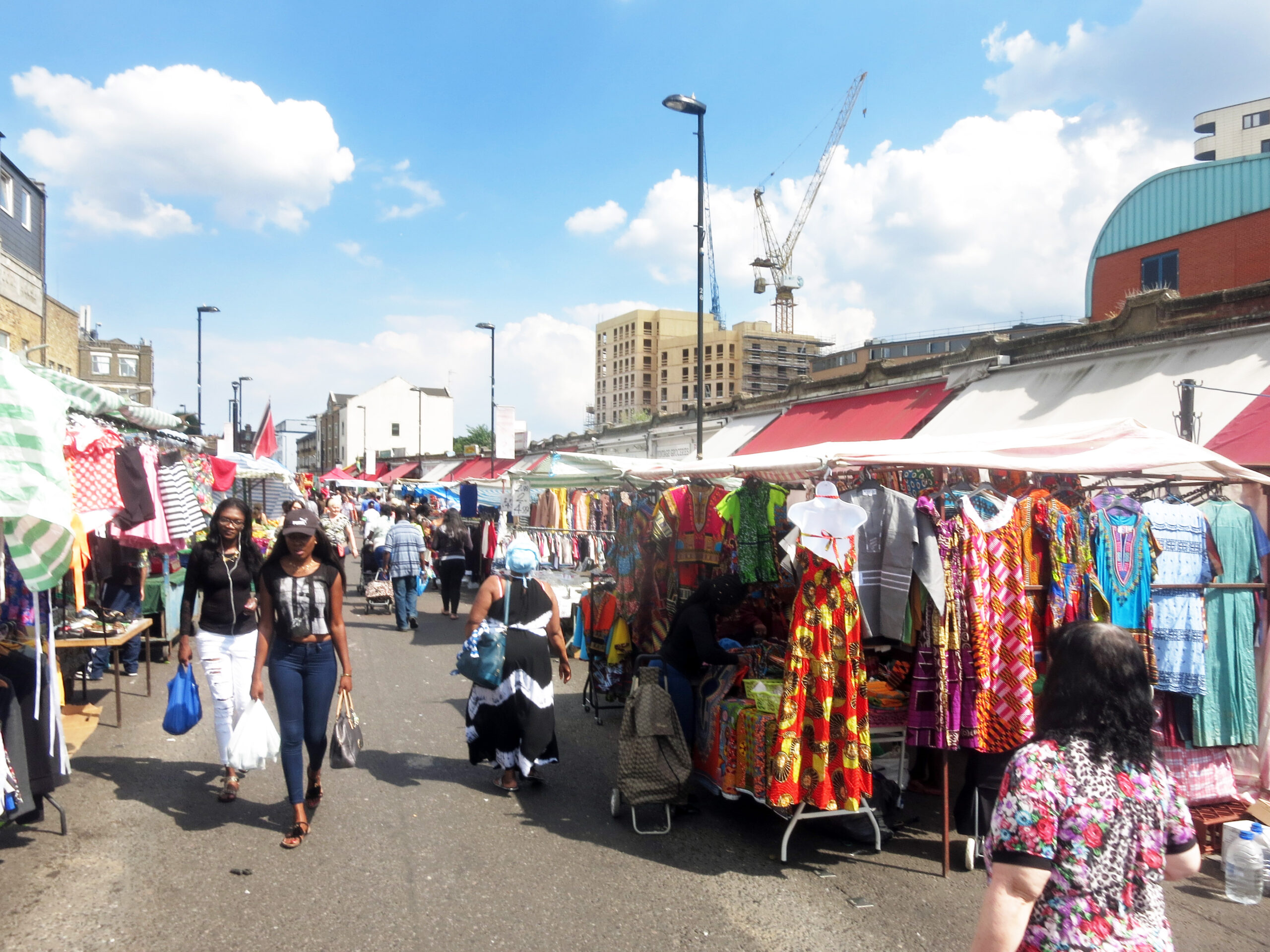
Multicultural London English
Multicultural London English is a label for a new dialect of English that originated in East and South London and is now spreading throughout the London region and beyond. The accent is generally associated with young, working-class people from ethnic minority backgrounds.
Linguists believe that MLE developed over the past 30 years as a result of close contact between speakers from different ethnic and linguistic backgrounds in multiethnic parts of London. In many respects, MLE has replaced Cockney as the local accent in the East End of London, especially among young people.
Introduction
How has the English spoken in London changed over the centuries? What forces shaped those changes, and what impact did they have?
Inscribed in ‘London English’ are the social, cultural, economic and demographic changes that the city has undergone through time. Studying the words, grammar and accents of the city can reveal layers of history, telling the story of its citizens, and of London itself.
Pre-12th Century
Friends, Romans, Londoners
Founded by the Romans in the early 1st century AD, London was an ethnically diverse town with migrants from across the Roman Empire. In the following centuries, speakers of Germanic dialects increasingly settled in the region.
During this period of Old English, London was not yet the centre of English political power that it is today. Different Anglo-Saxon kingdoms located around England were dominant during the early life of English – Northumbria, Mercia, and eventually King Alfred’s Wessex.
London increased in importance towards the end of the Old English period: William the Conqueror recognised the emerging importance of the city, and was the first to be crowned in Westminster Abbey.

London, a city of migration
Migration has been a feature of life in London for centuries. As well as bringing speech from other parts of the British Isles – leading to contact between speakers of different dialects of English – it has also brought English into contact with many foreign languages.
Over time these raw materials became part of new accents and dialects formed over many different cycles, with each new variety slotting into a different place in the evolving hierarchy of British social classes.
12th Century
An England without English
Though the Old English dialect of West Saxon was becoming influential before the Danish and Norman invasions, there was no ‘standard’ English as there is today – the modern ideology of having a standard or ‘correct’ variety of the language did not yet exist.
The Norman conquest of 1066 delayed that further: French instantly became the primary language, and English disappeared from the written record for 150 years. The masses continued to speak English — now Middle English – but it was only after King John lost Normandy in 1204, and the Anglo-Normans lost their ties to France, that English rose again as a national language.
13th Century
Pardon my French
When French receded and English became ‘visible’ again – in manuscripts from London and elsewhere – it looked like a changed language. French had held a position of prestige and power for two centuries. As a result, English had not been controlled by authorities like the church, the court, or government, for some time.
This meant English had developed freely in natural, common usage without attempts to standardise it. The combination of everyday use and contact with Old Norse and then French created the simpler syntax of Middle English – a language that feels more familiar and is much easier to understand for Modern English speakers than Old English.

Accent prejudice as old as London
Judging someone by how they speak, and mocking or stigmatising certain accents, as well as their association with social position, is nearly as old as the city itself. In Chaucer’s Canterbury Tales, written in the late 1300s, the character of the Prioress is mocked for speaking French with a distinctly East London accent, as she attempted to appear more sophisticated by speaking the language of the aristocracy:
“Frenssh she spak ful faire and fetisly, After the scole of Stratford atte Bowe, For Frenssh of Parys was to hire unknowe.”
14th Century
Pilgrims, rogues and knights
By the time of Chaucer, London had long been the political and cultural centre of England. But Middle English remained highly variable and there was no dominant presence of a ‘standard’ English as there is today. Chaucer himself used the London sub-variety of the East Midlands (then Mercia) dialect, a variety that was influential in the modern language that developed in London.
But literature and English culture flourished in this post-French period, which was an important time of re-establishing English identity, and the English language was rapidly re-organising itself to fit emerging medieval social structures and subcultures.
15th Century
The beginnings of a standard English: The Chancery Standard
By the end of the medieval period, a few varieties that would serve as the basis of a ‘standard’ English were emerging, mostly in London. These included the wider literary language of London but also the Chancery Standard, which was used for government documents.
It was also around this time, possibly from the influence of French among the new middle classes, that the pronunciation of English vowels started to change. The ‘Great Vowel Shift’ continued for 300 years, and gave us many of today’s Standard English pronunciations.
We know some elements of the London accent were taking shape at this time, from Chaucer and other writers (e.g. rhyming patterns). But it is not until a few centuries later that we see the fully articulated system of social class shaping London English into what it is today.

Chancery Standard
‘Chancery Standard’ describes the written English of London’s Chancery clerks in the 15th century. The clerks worked for the king, preparing his documents, and the standard developed around 1430. Before the 1430s, official records were usually written in Latin or French.
It was based on the speech of London, which at the time was heavily influenced by the East Midlands. Clerks who used the standard were often familiar with Latin and French, which also influenced the forms they chose.
16th Century
A changing city and a changing language
From the 16th century, London moved out of the feudal age into one with a growing middle class and increased contact with the outside world. Language became an indicator of increasingly defined lower, middle and upper social classes.
A debate raged about how much English should borrow from languages like French, Latin, and Greek. Some wanted to preserve a ‘pure’ Anglo-Saxon English (an idealised notion: remember, London had always been a melting pot of dialects); others wanted more integration with Romance languages to borrow their prestige. Meanwhile, Shakespeare took advantage of the chaos to coin thousands of new English words and phrases.
The more purist stance on English style remained influential for many London writers centuries later: Dickens and Orwell both expressed preference for a spare, Anglo-Saxon style. All the same, thousands of French words successfully entered the English language during this time.

Elizabethan Cant
This was a variety of working class speech that emerged in the 16th century, and was an early example of the ‘antilanguages’ that have always developed in London. These are common in working class subcultures, and use slang words to obscure meaning and avoid surveillance.
Cockney and Multicultural London English (MLE) also have examples of these sorts of antilanguage. Like these modern varieties, Elizabethan Cant had very diverse influences, including French and Romani. A few words, such as ‘booze’, remain in use to this day.
17th Century
Revolution, fire and plague: a century of upheaval
The 17th century witnessed incredible upheaval: the English Civil War, the plague, the Great Fire of London and new waves of migration.
The Civil War saw England veer from Puritan rule to the liberties and excesses of the Restoration in a very short time. Refugee French Huguenots settled in the East End, and the expulsion of Jews from England ended when they were invited to resettle by Oliver Cromwell. These large scale migrations changed demographics, with new East End communities developing, while economic turmoil and new social mobility disrupted old feudal structures.
The social class structure of the city was transformed, generating anxiety about prestige which led to an increased emphasis on gaining status through ‘correct’ speech. These upheavals, and their impacts on language, formed the foundations of the polarised system of a high prestige standard English and working class vernacular English that developed in later centuries in London.
18th Century
An emphasis on standards and status
The eighteenth century saw an anxious reaction to the previous century with a swing to a more conservative, Augustan age.
It was an age of publication of dictionaries and grammar – such as Samuel Johnson’s famous ‘Dictionary of the English Language’, Jonathan Swift’s ‘A Proposal for Correcting, Improving and Ascertaining the English Tongue’ – and an increased attempt to control and ‘fix’ the English language.
These efforts to standardise English accompanied efforts in London institutions to nurture a high-prestige language suited to the growing international prestige and power of Britain’s expanding empire.
19th Century
An alignment of speech with class
The nineteenth century saw many new communities form in London, including Irish migrants fleeing famine in Ireland, and the arrival of Yiddish-speaking Jewish refugees from Eastern Europe.
The standard-vernacular divide in British culture was fully established, as varieties of London speech became completely aligned with places in the hierarchy of social class.
Victorian literature – Dickens, the Brontes, George Eliot, many others – gives us an exceptionally vivid picture of a finely controlled social class system through, among other details, the detailed depiction of working, middle, and upper class London speech.

Cockney
The East End has been home to almost all of London’s most famous vernaculars — Elizabethan cant, Cockney, and MLE. By the 19th century the accent and dialect of Cockney were internationally known, featuring in the work of Charles Dickens and George Bernard Shaw.
Cockney is often seen as a quintessentially English dialect. However its origins were as influenced by immigration as any modern London varieties, with words from the Yiddish (oi, nosh, schtum, kosher, schlepp), from Hindi/Urdu via military officers in British India (decko, doolally, Blighty), and from Anglo-Romani (pal, chav, wonga).
20th Century
From fixed to fluid: a new generation of change
The first half of the 20th century was a stable period in London’s history, socially and linguistically.
Foreign migration was low, though important communities of non-English speakers existed. The dominant accents reflected a rigid class hierarchy – Received Pronunciation (named in 1920, and originally described as Public School English) was the prestigious standard, associated with the upper class and an aspirational middle class. The traditional vernacular – Cockney – was associated with lower classes and highly stigmatised.
Following World War Two social mobility and migration led to major demographic change. A flurry of new language varieties formed as arrivals from the Caribbean and South Asia fused their dialects with London vernaculars to create new varieties, like London Jamaican, British Asian English and Black British English.

Multicultural London English
Multicultural London English is a label for a new dialect of English that originated in East and South London and is now spreading throughout the London region and beyond. The accent is generally associated with young, working-class people from ethnic minority backgrounds.
Linguists believe that MLE developed over the past 30 years as a result of close contact between speakers from different ethnic and linguistic backgrounds in multiethnic parts of London. In many respects, MLE has replaced Cockney as the local accent in the East End of London, especially among young people.
21st Century
New dynamics and new varieties
At the start of the 21st Century, London continued to see large-scale migration, both from existing sources as well as increasing numbers from West Africa and Eastern Europe, and these ongoing changes have continued to impact the accents and dialects of the city.
New hybrid varieties have emerged, for example Multicultural London English (MLE) which developed among groups from different ethnic and linguistic backgrounds living together in high-migration neighbourhoods. These new varieties are replacing the traditional vernacular Cockney in working class parts of London now, especially among the young.
